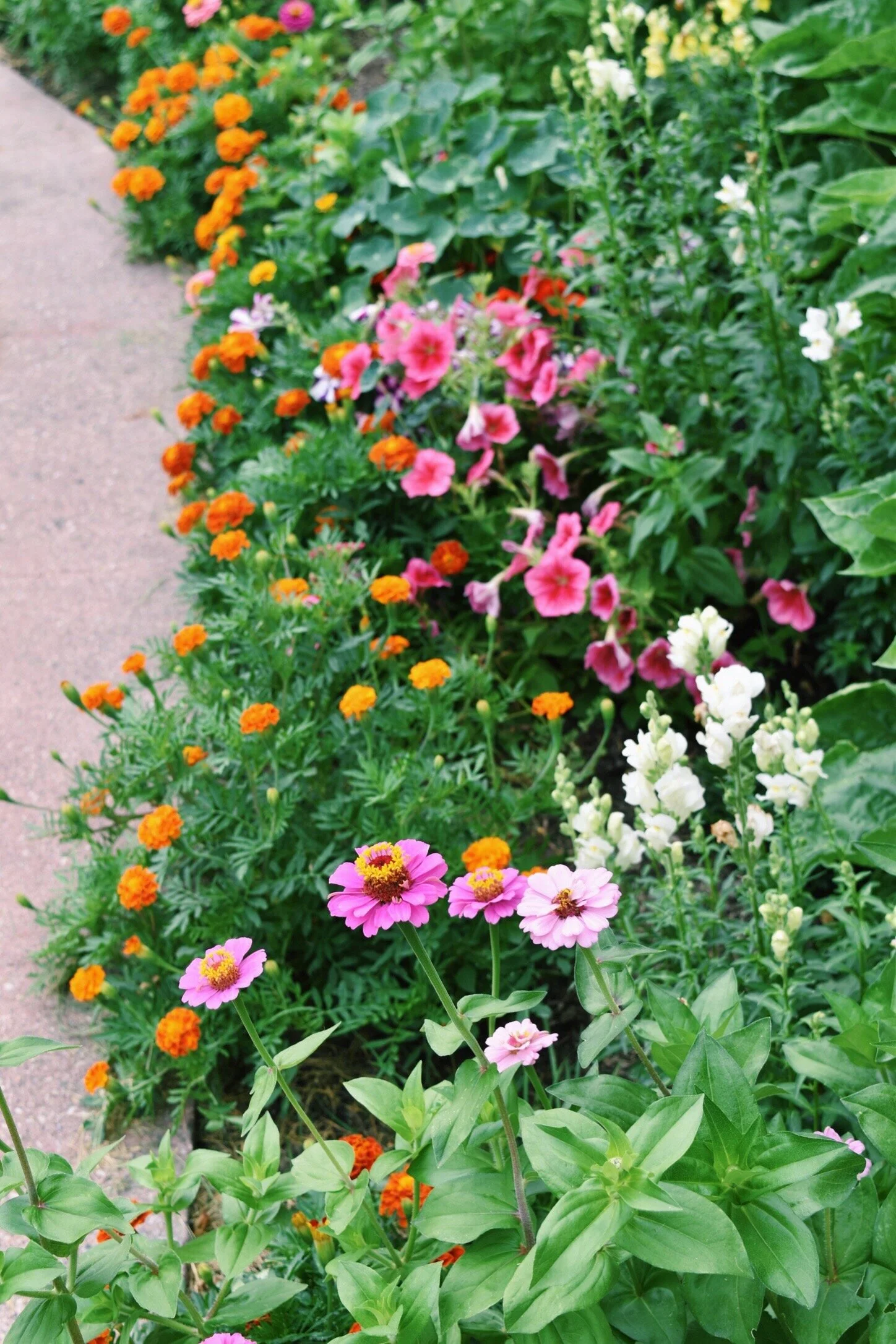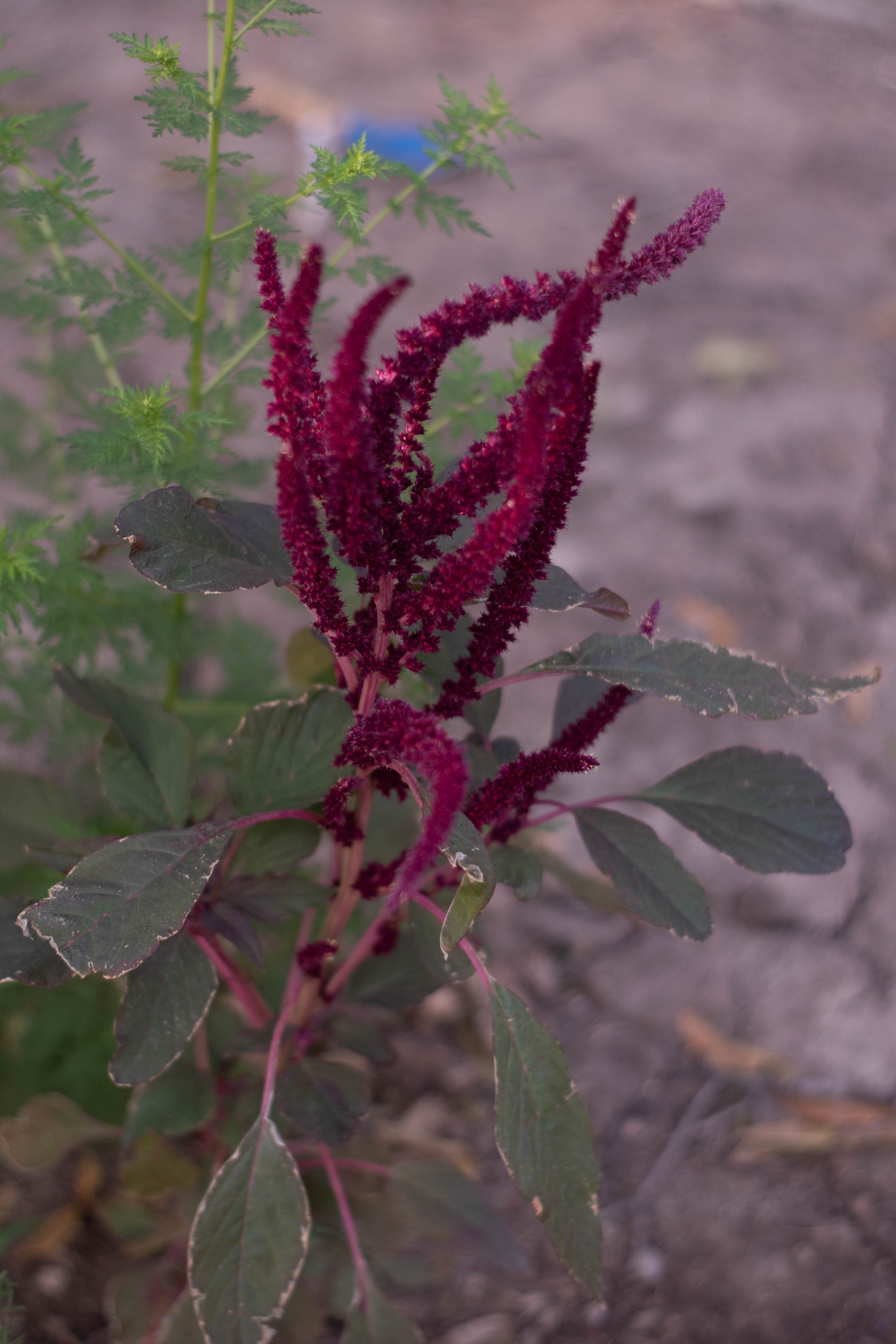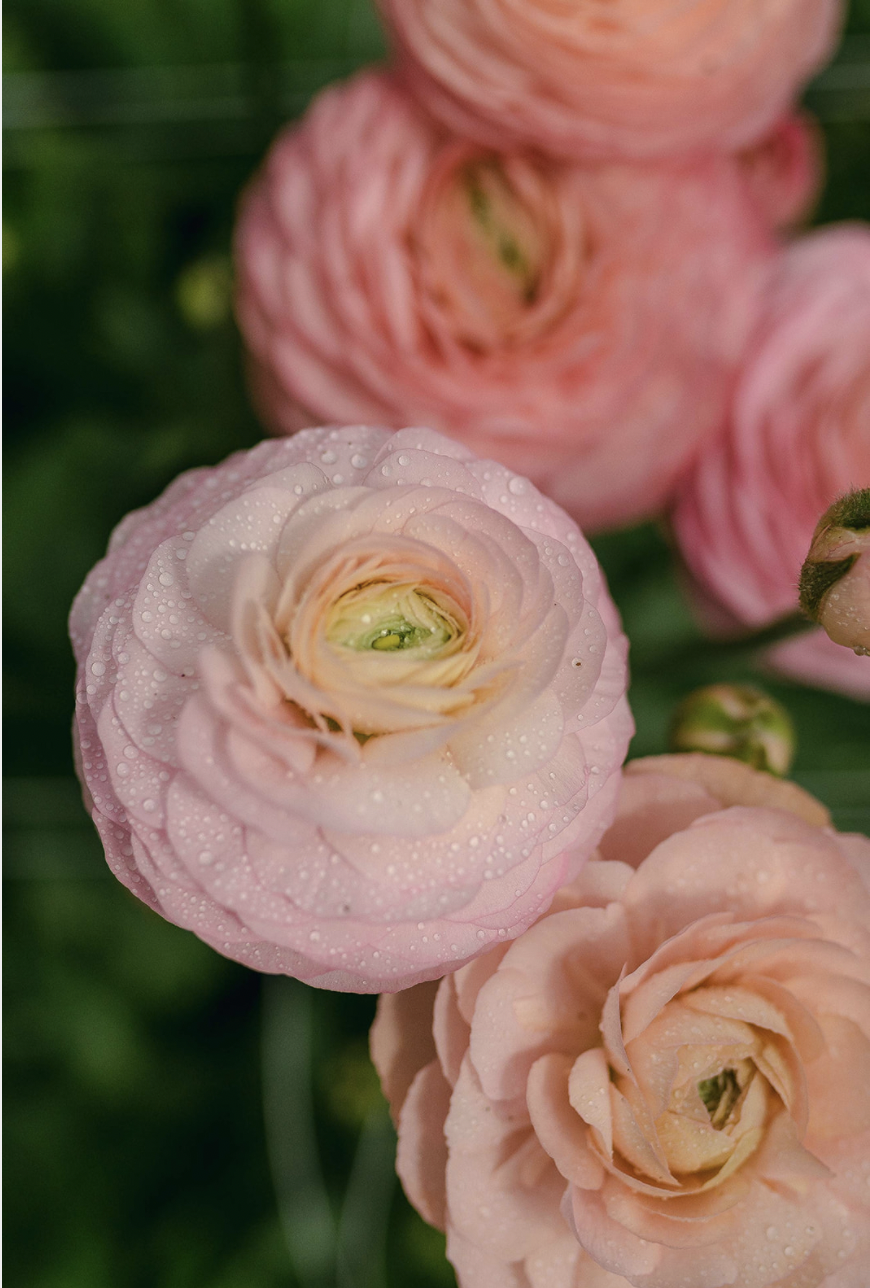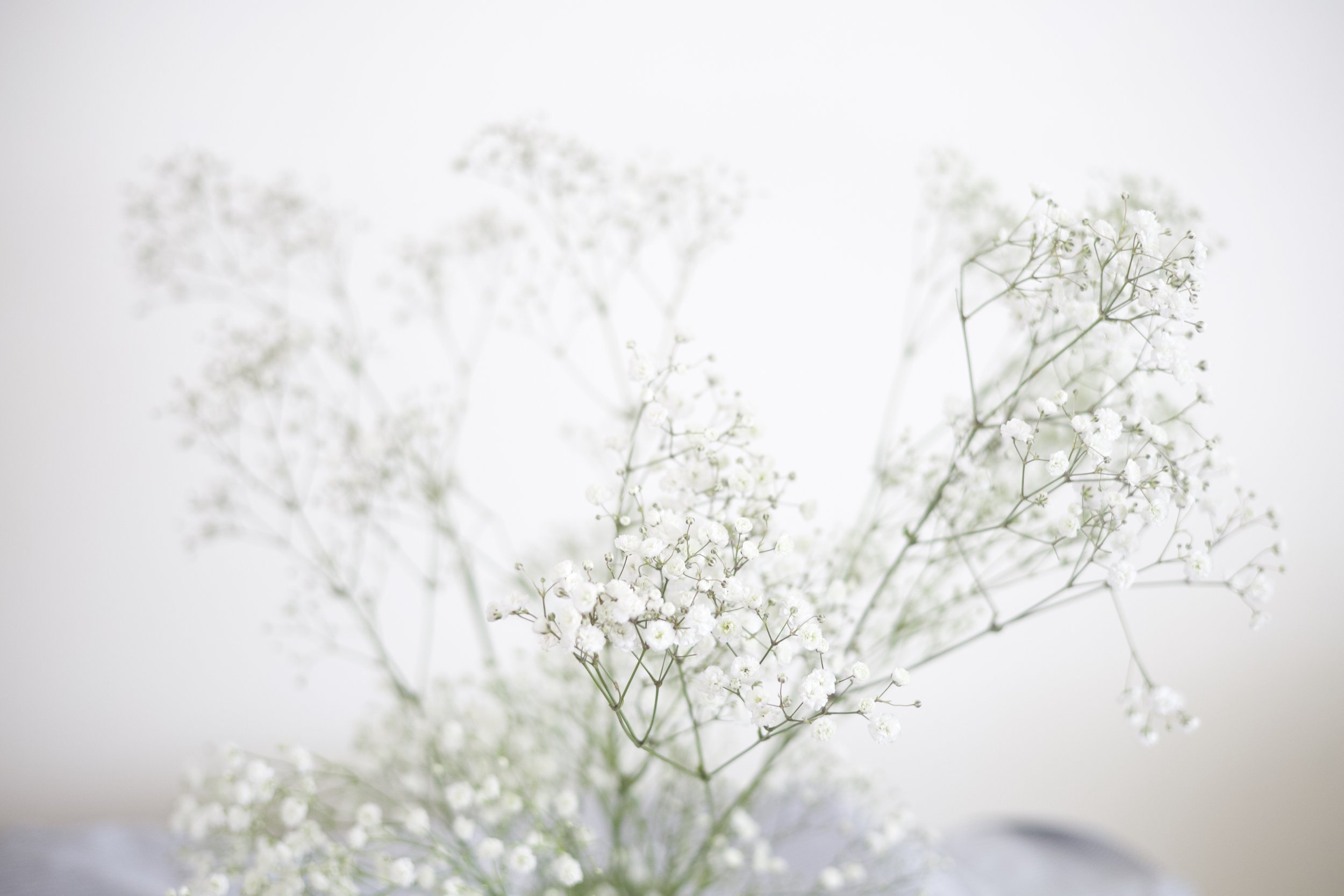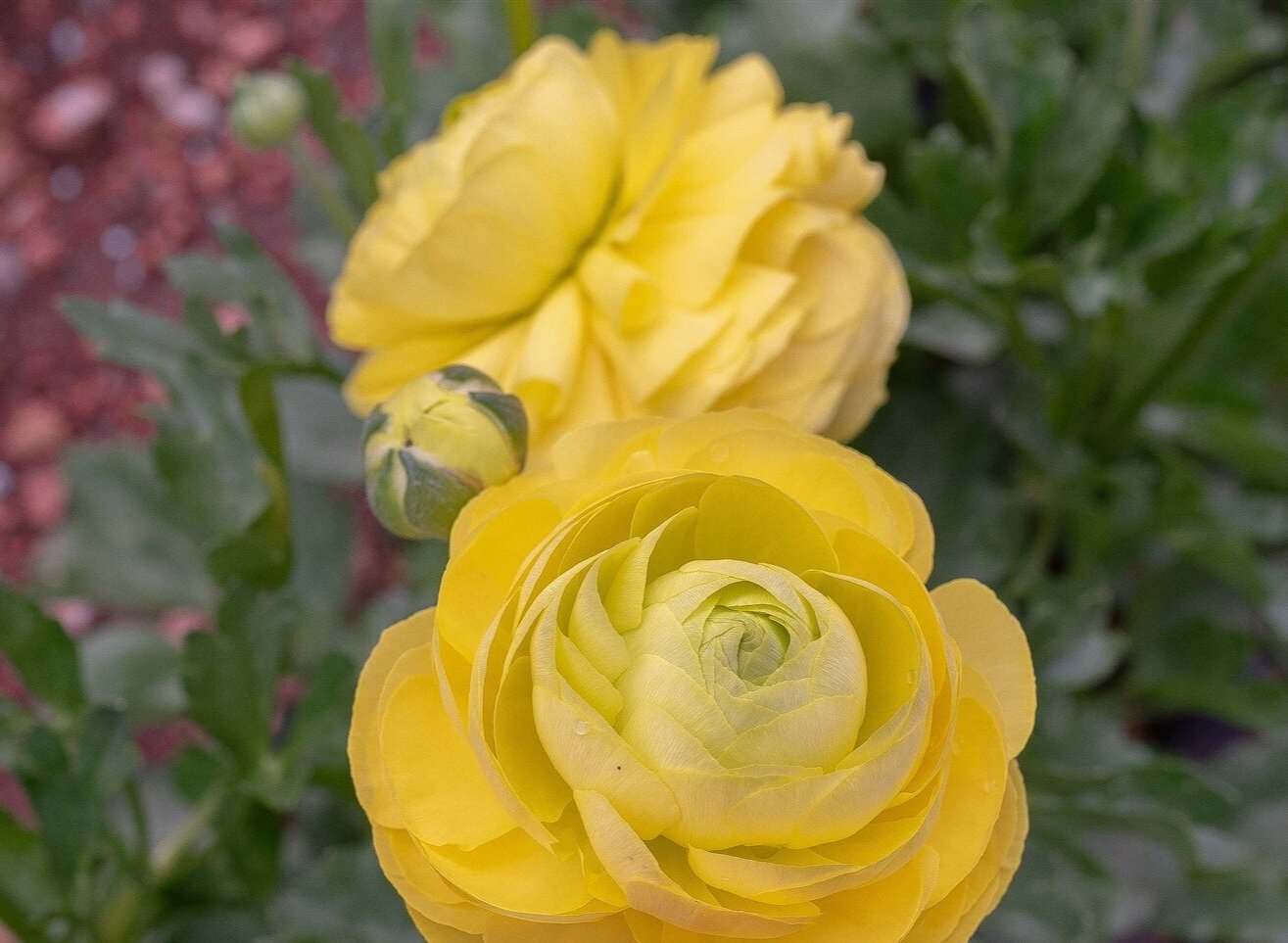How To Make A Flower Crown
Flower crowns are much easier to make than you might think and are a really fun element that you can add to occasions or just create on a rainy day. They’re simple enough that you can do this activity even with very young kids and the results are unique and beautiful.
What you will need:
-Some stiff wire
-Snips or scissors
-Masking tape or floral tape if you have it
-Flowers and/or foliage with short stems
In this example I choose to use Lady of Shallot roses, Double Chater Salmon Hollyhocks, Yellow Colombine, White Tea Roses, pansies, common white dianthus and some cuttings from some bushes in my yard. As you design your crown, think about color and texture. I chose a color scheme of blooms in a range of apricots and pinks. Using colors that are next to each other on the color wheel or that are different textures of various shades of the same color is a good place to start if you’re not confident in choosing colors that go together.
Directions:
Step 1:To begin, take your wire and use it to measure the circumference of the head of the person you are making your crown for.
Step 2: Give yourself an extra 6-8 inches and wrap the wire back around itself as seen in the image below.
Step 3: You will then choose a flower or small bunch of flowers and greenery and hold it firmly against the wire.
Step 4: Take a short piece of tape and wrap it snugly around the stems of the little bunch or blossom.
Step 5: Moving in the same direction, layer the next bunch just slightly farther down the wire, overlapping the bloom that has already been secured and repeat step 4 with the tape.
Step 6: Continue attaching your blooms, working around the wire until all of the wire is completely covered.
I’d love to see your crowns so please post using the hashtag #haldengarden so we can all see your beautiful creations.
Leave any questions below in the comments!
- Sara Haller -
How To Use Edible Flowers With Molly J. Wilk
I had the pleasure of talking with Molly J. Wilk, a pastry chef and Le Cordon Bleu graduate from Austin Texas. Molly lives in Versailles where she teaches pastry making in her enchanting French apartment.
I’ve followed Molly on Instagram for about a year now, and I sincerely love seeing what new confection she will bake up next. I started to notice the thing that really sets her incredible creations apart is her use of flowers on her pastries.
She’ll make lemon tart with a dusting of lavender, cakes dotted in bright flowers, or macaroons glittering with crushed petals. I finally reached out to her, and she was nice enough to call from France to share with me some of her secrets to using edibles.
When working with edible plants on food, you need to make sure that they are culinary grade. This means they were grown in such a way that they can be safely eaten. Flowers, unlike food, are often cultivated with less regard towards chemicals and cleanliness because they were not grown with the intent to be eaten. Flowers from your local grocer are probably not clean enough to put on food, so use caution.
Growing edibles yourself is ideal because you can control the way in which they’re grown and make sure that they are clean and safe to be used around food. Molly has a little grow box on her balcony where she gets a lot of her herbs and blooms.
Another place she sources from is a little market in Versailles called Potger Du Roe which was created in the 17th century to supply fresh produce for the King’s Palace. It is available to be toured, which Molly would highly recommend if you’re ever in Versailles. There, she buys a barquet, which is little bundle of edible flowers that are grown with the intent to use on food. A barquet will include marigolds, calendula, lavender, or a few other herbs.
Herbs are one of Molly’s favorite edibles to use such as Oregano, Rosemary, and Pineapple sage. Herbs are highly scented which adds another dimension of beauty and flavor to pastries.
One rule of thumb Molly has is to only use plants on her food that can actually be eaten. On occasion she might top a cake with a non-edible flower for decoration, but not without taking preventative measures to protect it such as wrapping the stems with florist tape, using aluminum foil, or painting on a clear glaze you can make that preserves your delicious dessert.
The easier thing to do is simply decorate with edibles. And there is a large array to choose from: Marigolds, elderflower, dandelions, lilacs, chive blossoms, calendula, acacia. Some of the real beauties are roses, peonies, daisies and pansies.
I asked Molly this question: Are the flowers meant to be eaten? She says that it depends, and in some cases the flowers are very much meant to be a part of the pastry flavor and texture. Dried flowers tend to be a good way to add a different dimension without overpowering the flavor of the confection.
If Molly chooses to dry her flowers, she washes them and sets them on a paper towel to be left on the counter for a few days until they are dry. You can also hang larger bundles of herbs and flowers with twine until they are dry enough to store in a jar or paper sack.
Drying flowers can be a really good way to preserve memories: a bouquet from a wedding, a favorite party, or some herbs snipped from home. Every time you go to use them the memory of their origin will be there for you.
If you’re interested in learning more about how to make French pastries and using edibles, Molly offers online pastry classes. She also does surprise Bake Alongs and posts recipes on her Instagram @mollyjwilk and her website. Huge thank you to Molly for sharing with us her knowledge and know how!
If you want to grow your own edibles for drying and baking, we have plenty of beautiful herbs which can be found here or various varieties of flowers which you can find in these links: calendula, pansies, stock, and snapdragons.
Also, be sure you know which flowers are edible and which are not because some are poisonous such as foxglove and sweet peas.
Planting a Cottage Garden
You might think planting flowers from seed is just not realistic. I thought the same thing BUT my little cottage garden this year has taught me otherwise.
Sara Haller here, co-founder of Halden Garden. I wanted to show you how to plant your own cottage garden, like this one I did last year. You might think planting flowers from seed is just not realistic. I thought the same thing BUT this little cottage garden taught me otherwise.
A cottage garden is more unplanned than a traditional garden. That’s why direct sowing one from seed is ideal.
After the last frost date, I just scattered seed based on height, placing taller flowers in the back and shorter varieties in the front.
The key to planting flower seed is to water right and have patience. If seeds dry out even once they will not germinate.
Newly planted seeds need water every day for a short amount of time. As their roots become deeper they need longer watering less frequently. You kinda have to build up based on their size. That will be about twice a day at the start and then once a day, every other day, and finally once a week.
And before you know it you’ll have big beautiful flowers in your garden for very little cost.
Other tidbits to know: Snails LOVE marigolds especially so you’ve really got to watch them when they’re seedlings. Put out snail bait when you plant and then every one to two weeks as needed.
If you have a new garden plot that has a lot of sun and hasn’t ever had flowers in it you should plant petunias. Mine kind of got crowded out but the pink ones in the picture above are petunias. In new ground they THRIVE and grow big and beautiful the whole growing season. These petunias I started from seed indoors in March so they’d be ready to put out just after last frost.
Another fun thing about a cottage garden is in addition to adding beauty to your landscape these beauties all do well as cut flowers so you can bring them inside for flower arrangements. The more you cut, the more flowers will continue to bloom.
If you’re sad you missed the spring planting, it’s not too late. All of these flowers mature in 75 days or less so even in June or July you could start and have blooms in September and October depending on your zone. Check your last frost date and count back from there.
Here are the links to the “recipe”/seeds I used in my Cottage Garden if that helps: Calendula, Marigolds, German Chamomile, Sunflowers, Snapdragons
I hope this helps! Put any questions you have in the comments!













































